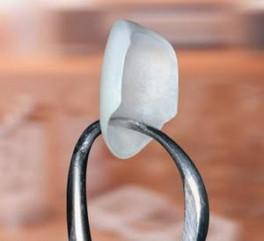Dental veneers are are bonded to the front of the teeth. They can be used to fix chipped, stained, misaligned, worn down, uneven or abnormally spaced teeth.
Types of Dental Veneers
1. Porcelain veneers that are fabricated in a dental laboratory are bonded to the teeth with resin cement. Porcelain material is brittle; however, when it is firmly bonded to the tooth it can become very strong and durable.
2. Composite veneers can also be fabricated by the dentist inside your mouth at a dental office.
|
Pro |
Con |
|
Easily Whiten Your Smile – Veneers are largely stain-resistant. |
High Cost – The price of veneers will vary based on your location, your dentist and the number of teeth you want restored. |
|
Fix Minor Cosmetic Problems – Slightly crooked or gapped teeth |
Increased Sensitivity – you may feel sensitivity to hot or cold temperatures for the first few days after your procedure, but it usually goes away |
|
Replace Damaged Enamel – Veneers are an excellent treatment for teeth with enamel abrasion or enamel erosion |
Irreversible Procedure – Veneers are considered permanent because your dentist needs to change the structure of your natural teeth to properly place them |
Dental veneers are an excellent way to hide discolored, crooked or damaged teeth, but it’s important to weigh the pros and cons that come with the territory before getting them. Make an appointment with your dentist to find out if dental veneers are a fitting solution for you.
Comparison between porcelain veneers and composite resin veneers
|
Porcelain Veneers (thin shell that is custom-made to fit on the tooth.) |
Composite resin veneers A composite resin veneer is made from a tooth-colored filling material bonded to the tooth. |
| They are strong and long-lasting |
Usually less tooth enamel needs to be removed than for crowns or porcelain veneers |
| They have a natural-looking surface |
May mean fewer visits to the dentist—sometimes these veneers take just one visit |
| L ess tooth enamel needs to be removed than with a crown or cap |
Cost less than porcelain veneers |
| They don’t stain easily |
Are easy to fix if they get damaged; although composite veneers are generally not as strong or wear-resistant as porcelain veneers, composite veneers can be repaired easily and quickly |
Before you get veneers
- Your teeth and gums must be healthy before you get veneers. Your dentist can treat any disease or decay before your veneers are placed.
- Veneers are not always a good choice for patients who clench or grind their teeth, because the thin veneers may chip or break. If you clench or grind your teeth, your dentist may suggest you wear a plastic dental night guard while sleeping.
- Although your dentist removes as little tooth enamel as possible for veneers, the process cannot be undone once the enamel is removed.
- It is possible for veneers to come loose over time. In that case, new ones might be needed.
- As with all your dental care, discuss all your expectations and treatment options with your dentist. Regular dental visits are a must for keeping your teeth and gums healthy.
How are Dental Veneers Placed?
The dentist would remove a small amount of the tooth surface to permit placement of the veneer. An impression is taken of the tooth and sent to the dental laboratory. The dental veneer is then made to fit the tooth and mouth. The veneer is bonded to the tooth with resin cement.
After you get veneers
- Veneers can chip or break under pressure. Avoid biting your fingernails and chewing on hard objects, such as pencils or ice.
- It may take you a few days to get used to the feel of your veneers. But do let your dentist know if your bite does not feel right after the veneer has been placed. He or she will correct it before you leave the office.
- Keep your teeth and gums clean by brushing and flossing each day. You can still get cavities under or around veneers. Look for dental care products that show the American Dental Association’s Seal of Acceptance. This says that a product has met ADA standards for safety and effectiveness.











